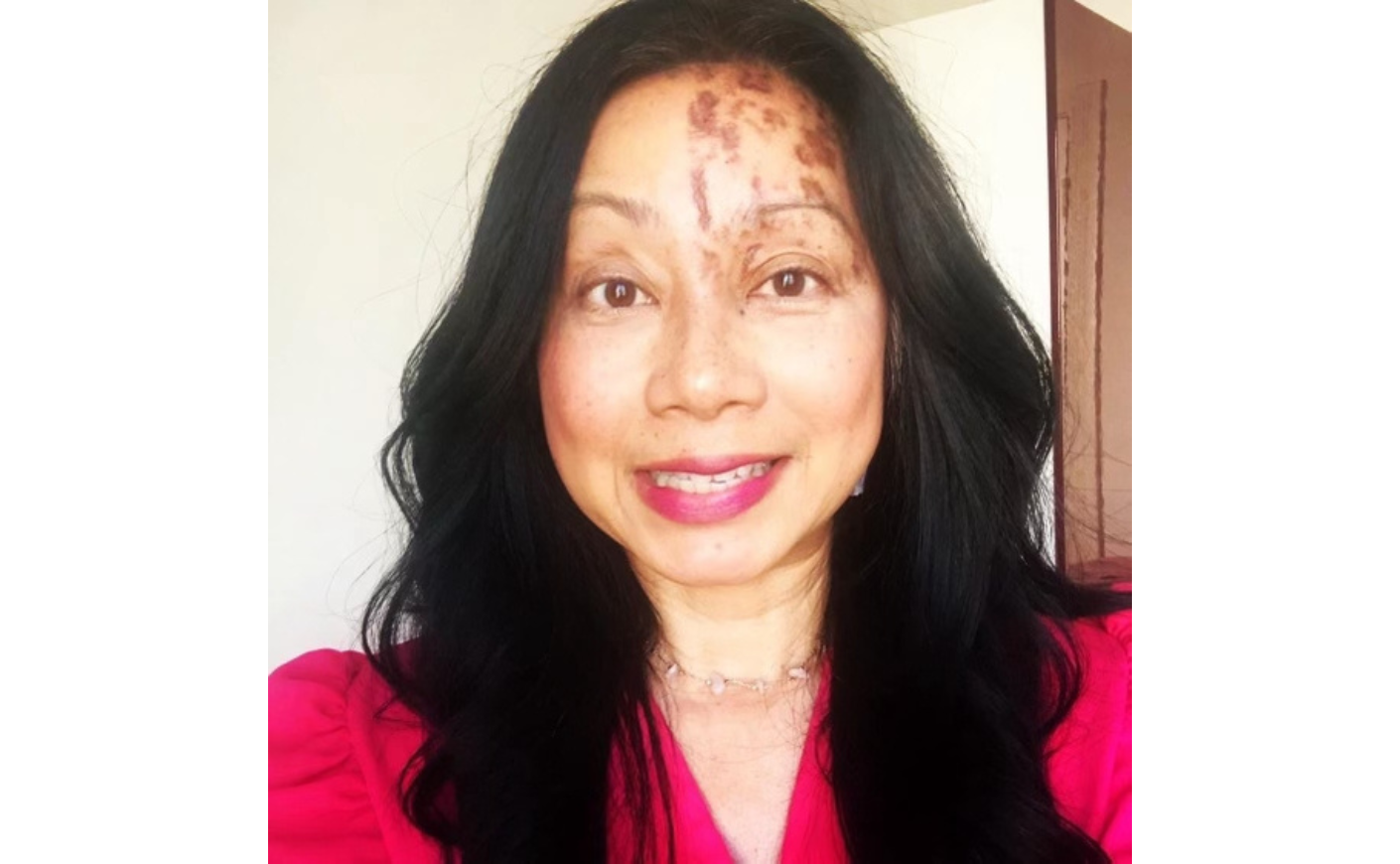Eager to take a break from her work as a San Francisco-based nurse, Laarni—now a GSK spokesperson and shingles advocate—headed to Hawaii with her family in May 2021. Little did the then-50-year-old know that her journey would take an unexpected turn: developing what she would later learn was shingles on the 5.5-hour flight.
It all began when Laarni noticed what she assumed were a few pimples on her forehead; she figured they were related to a recent visit to the salon for some pre-trip preparation. But a few days later, as she was boarding her flight to Hawaii, she and her husband noticed that these didn’t look like run-of-the-mill blemishes anymore. “There were abnormal blisters on the left side of my face,” explains Laarni. “The raised and red bumps on my forehead were growing and getting progressively unsettling.”
Shingles, a condition the 50-year-old nurse had mistakenly always associated with the elderly, was the furthest thing from her mind, even though an estimated one million people experience shingles each year in the U.S., with most adults 50 years of age and older at an increased risk for the virus.
Throughout the flight, the blisters on Laarni’s face became more pronounced, prompting a visit to an urgent care center upon landing. “I knew something was off,” she says. The doctors noticed the raised red dots were encroaching on her eye area and becoming more swollen. “The blisters weren’t affecting my eyesight per se,” she says, “but my eyelids were swollen, as if there were bug bites on them.”

Because of concerns that the rash could impact her eyesight — or worse, lead to blindness — Laarni was hospitalized. The diagnosis quickly became clear: Laarni had shingles. Instead of enjoying the vacation with her family, she spent the following seven days in the hospital.
Even as a nurse, Laarni admits to being taken aback by the news. “I’m healthy, I work out, I had zero signs of any kind of health impairment,” she explains. “To learn I had shingles was absolutely shocking. Shingles is unpredictable, and for me, it developed at an unfortunate time.”
Many people are unaware that if you’re one of the 99 percent of adults 50 years of age and older who’ve had chickenpox, the virus that causes shingles is already inside your body, even though not everyone at risk will develop shingles. Once in your body, the virus can reactivate at any time, and that risk increases as the immune system naturally declines with age. “Stress may increase your risk of shingles, but age is the most important risk factor for developing shingles, as most cases of shingles occur in adults 50 years and older,” explains Dr. Leah Smith, pharmacist and medical educator at GSK.
“As much as people would like to believe that their age is just a number, or that they’re ‘too young’ or ‘too healthy’ to think about shingles, that’s not the reality,” explains Dr. Smith. “Although Laarni’s experience was a complicated case, people often don’t realize their own likelihood of being diagnosed with shingles in their lifetime.”
For Laarni, the complications of shingles lingered for several weeks, marked by the slow healing of lesions, scabs, and the eventual disappearance of the pronounced rash from her face. She says the emotional impact was profound: “I couldn’t dye my hair, put makeup on, or go out in the sun…I’d have to wear hats and glasses,” she explains. “It took a toll on my self-esteem.”
Beyond the physical symptoms of shingles, certain lingering effects can follow a diagnosis, including post-herpetic neuralgia (PHN), a condition causing long-lasting pain that can endure for several months or even several years. “The pain from PHN can be debilitating, may interrupt daily life, and can lead to depression, fatigue, insomnia, lack of appetite, and impaired concentration,” Dr. Smith explains.
As Laarni continues working as a nurse, she embraces each day with newfound mindfulness. “It’s healing for me to share my story and it’s important to me to raise awareness around this illness,” she says. “Shingles can hit at unexpected and inopportune times, and that’s why it’s so important to ask your doctor or pharmacist about your risk for shingles — and about vaccination.”
If you’re 50 years or older, ask your doctor or pharmacist about your risk for shingles and about vaccination. Visit the THRIVE@50+ Facebook page to learn more.
This is one person’s experience; other people’s experience with shingles may be different.
The information provided on this site isn’t intended as medical advice and shouldn’t replace professional medical treatment. Consult your doctor with any serious health concerns.









